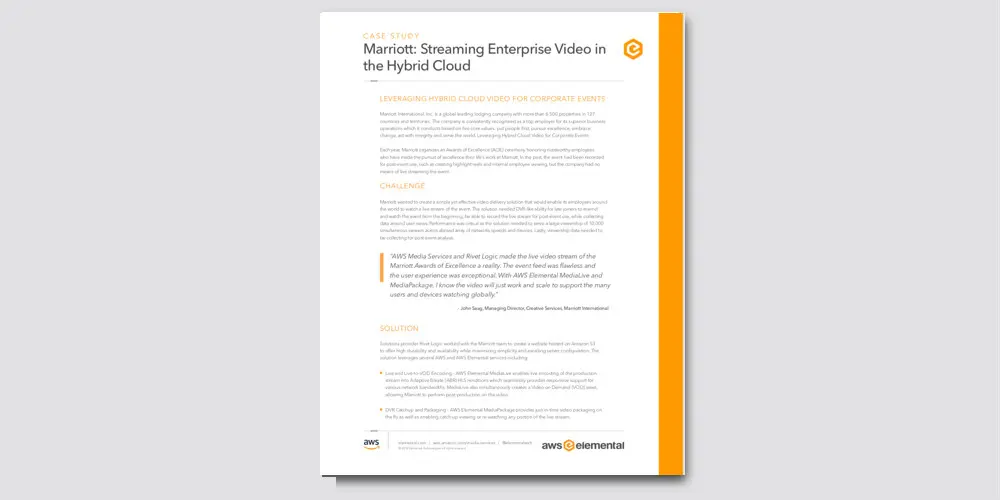A/B Testing vs Multivariate Testing: What’s the Difference?

Mike Vertal

Today’s customers have access to a multitude of channels at their fingertips, giving each person more options than ever before. For enterprises, keeping up with new challenges, changing customer preferences, and a host of new channels can be difficult.
To compete in this environment, organizations need access to data to test theories, launch experiments and deliver campaigns that attract customers with personalized content experiences. The need for personalization is also growing, with 49% of customers likely to become repeat buyers after receiving a personalized experience, according to Segment’s The State of Personalization 2022 report.
Two common options for testing and experimentation include A/B testing and multivariate testing. Each of these approaches has its own purposes and benefits. In this article, we’ll dive into them and explain their differences and how combining testing with a modern web CMS can yield even better results.
What Is A/B Testing?
A/B testing, also known as split testing, is a method for optimizing a website by comparing two versions of a web page to determine which achieves a better conversion rate or other goal. Live traffic that enters a website is funneled into each version of the page and comparisons are made for how each group of visitors reacts to the content shown. Some things considered in an A/B test include videos watched, button clicks, and other on-page interactions or call-to-actions (CTAs).
A/B testing is primarily used for optimizing websites but can also be used to compare different versions of other marketing content such as emails or digital advertisements.
When to Use A/B Testing
A/B testing is ideal when there are two specific versions to be tested quickly or if there is only one specific element that needs to be considered.
Advantages of A/B Testing
- Simplicity: A/B tests are easy to create and are used by various marketers when they need quick results.
- Speed: A/B testing is a fast way to identify which version of a particular campaign or piece of content customers enjoy the most.
- Ease of Interpretation: Given that the number of versions is limited, A/B testing results can be easily interpreted by the teams that use them.
Drawbacks of A/B Testing
As the name suggests, A/B testing is best used when comparing only two variants of a page. For instances where you want to test multiple variables, an alternative method needs to be used for accurate results.
What Is Multivariate Testing?
Multivariate testing determines how multiple variations in page elements compare with and impact each other. While an A/B test focuses on overall conversions, a multivariate analysis is used to measure the impact that various elements have on those conversions. For example, if the color or position of the buy button and the length of the CTA matter, or whether the types of images used in the content have a bigger impact.
When to Use Multivariate Testing
Multivariate testing is often used on sites with a significant amount of traffic, as well as pages with several different elements. For example, elements could include a CTA, headers or banners, sign-up forms, images and/or videos, and more. As they involve multiple variables, there are many more combinations and factors to consider as part of the visitor experience. Running a multivariate test may mean creating two or three versions of each element, funneling visitors to different combinations, and measuring the impact of each of the individual factors.
Advantages of Multivariate Testing
- Redesigns: Multivariate testing can help determine which areas to focus on during redesign efforts rather than recreating a completely new website.
- In-depth Optimization: Multivariate testing produces lots more data about what matters to a site visitor, enabling a more in-depth analysis of their likes and dislikes, which can result in a highly optimized site visitor experience.
Drawbacks of Multivariate Testing
Despite its advantages, there are some key limitations of multivariate testing. For a multivariate test to be effective, there needs to be a large amount of traffic. Without enough visitors to test the multiple combinations in the test, you aren’t able to achieve statistical significance. In addition, to accurately make sense of the data, multivariate testing requires complex data analysis, making it hard to implement or taking a long time to generate results.
The Key Differences Between A/B Testing vs. Multivariate Testing
There are a few key areas where A/B testing and multivariate testing can differ:
- Element Combinations: A/B testing usually involves an either/or scenario that compares two variants of a single page at a time. With multivariate testing, multiple elements are considered.
- Traffic Requirements: Multivariate testing requires a large volume of traffic to be effective, whereas A/B tests can be conducted with a small number of visitors.
- Speed of Results: A/B testing is fast, and results can be achieved in days. Unfortunately, the complexity of multivariate testing means that weeks or months may be required to collect the necessary data, and generate results.
A/B and Multivariate Testing With CrafterCMS
Brands need the option to test different content variations to get the most out of their marketing campaigns. In order to achieve this, proper technology support is crucial. With CrafterCMS, modern marketing teams have the capabilities to experiment and optimize their content experiences for their audience, whether they choose A/B testing or multivariate testing. CrafterCMS supports both approaches.
Read More: How CrafterCMS Does Personalization
CrafterCMS provides a headless CMS that not only offers the freedom and flexibility to deliver engaging experiences on any digital channel, but also combines that with a best-in-class authoring experience. For personalization efforts, CrafterCMS provides easy API integration with analysis tools. Most importantly, it supports content previews on any channel allowing marketers to create and test any number of variants and combinations, either a couple variants of a single site page or digital view (A/B testing), or a wide range of different content elements across two or more site pages or digital views (multivariate testing). CrafterCMS provides the platform and capabilities to test whatever makes sense for your enterprise, and optimize what resonates the best with your audience.
Ready to optimize your content experiences? Download the open source CrafterCMS project now.
Related Posts

Websites Are Dead?

Mike Vertal

From Content Author to AI Co-Creator: The Next Evolution of CMS Workflows with MCP

Amanda Lee

Building Resilient Digital Experiences: Multi-Region Deployment Strategies with Crafter Cloud on AWS

Sara Williams

TYPO3 Alternatives: Why Enterprises Choose CrafterCMS

Amanda Jones
Related Resources
-

CrafterCMS at eBay: The Universal Content Platform for eBay.com
Webcast
-

Personalized Digital Experiences for a Cruise Liner
Webcast
-

How to Migrate from Contentful to CrafterCMS
Tutorial
-

How Content Led e-Commerce Drives Customer Engagement
Webcast
-

Marriott: Streaming Enterprise Video in the Hybrid Cloud
Case Study





